Rescue Operations
Submarine rescue entails all activities related to on the first hand
rescuing of the crew and secondly salvage of the boat.
The organization of submarine rescue in
Sweden
is founded on a thorough analysis made in the early
thirties. This resulted in acquiring equipment for personnel
and submarines and later also in building of test diving
tanks in Stockholm,
Gothenburg and Karlskrona. The former two tanks were 6 m deep and allowed training of
breathing apparatuses and escape trunks. The deeper 20 m tank in Karlskrona was
built during WWII when the number of submariners increased
considerably.
Detailed description see
pdf-dokument 2Mb.
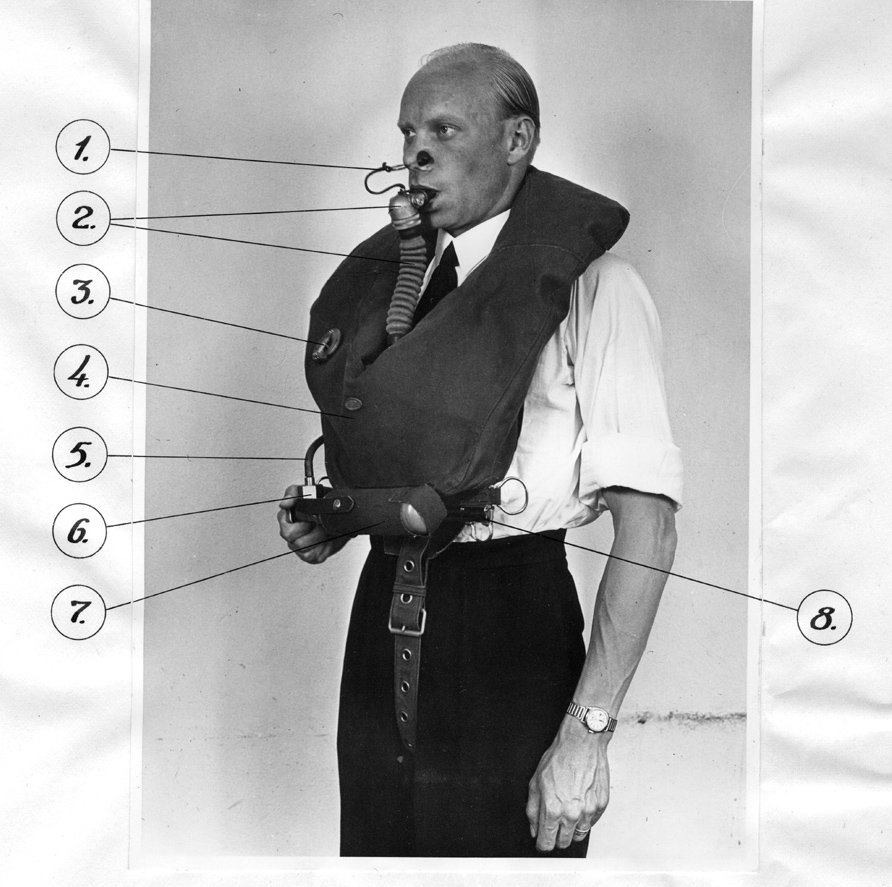
Breathing apparatus M/42
1 Nose clip
2 Breathing hose with mouthpiece
3 Pressure maintaining valve
4 Breathing bag
5 Hose connecting oxygene bottle-checkvalve
6 Hose socket
7 Oxygene bottle
8 Pulling rail
Breathing apparatus used for free escape from the submarine,
model 1942. Photo U3 archives
The Swedish Navy did earlier rely on private salvage ships providing ship
and equipment. During WWII a salvage ship named BELOS was
acquired and was rebuilt for use by the Navy. Belos was
provided with divers and manned by the Navy. When searching
for the submarine HMS Ulven that foundered after having hit
a mine, BELOS became well known in Sweden. The Ulven was foundered 15th
April 1943. BELOS was the ship that found her and confirmed
the loss.
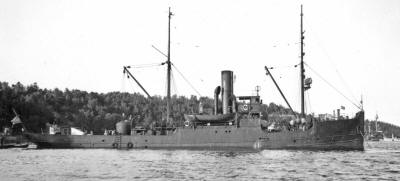
Submarine salvage ship Belos I. A rescue bell is seen at the aft winch. Photo U3 archives.
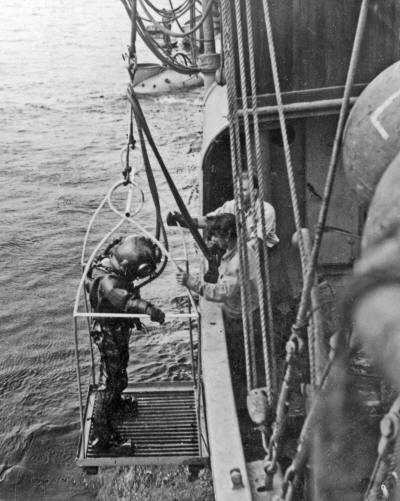
The Belos I with a diver. In the background the rescue bell, 1947. Photo U3 achives.
With the Belos I, two rescue bells were acquired named SVEA and GÖTA.
They were designed to connect to the escape hatch of a
distressed submarine. They could carry 8 persons at a time.
The Swedish bells’ design was influenced by American,
Charles Bowers,”Swede” Momsen model. This type of bell
became renowned when rescuing part of the USS SQUALUS crew
1939. More reading
on
USS SQUALUS.
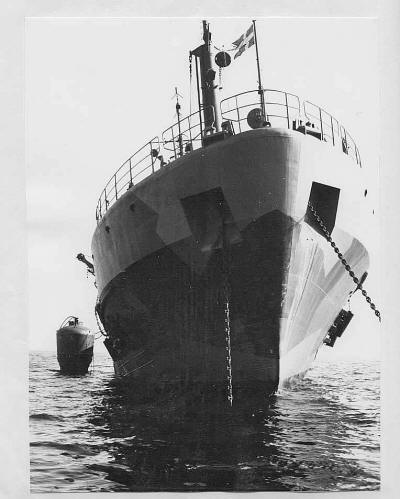
Belos II with rescue bell. Photo Bengt Rasin
Modern rescue facilities
To day the Swedish Navy relies on its Submarine Rescue Boat URF. This
submersible has the capacity to dive down to a distressed
submarine, mate and allow the whole crew aboard and return
to the surface, all in one single mission.
Her deep diving depth is
460 m.
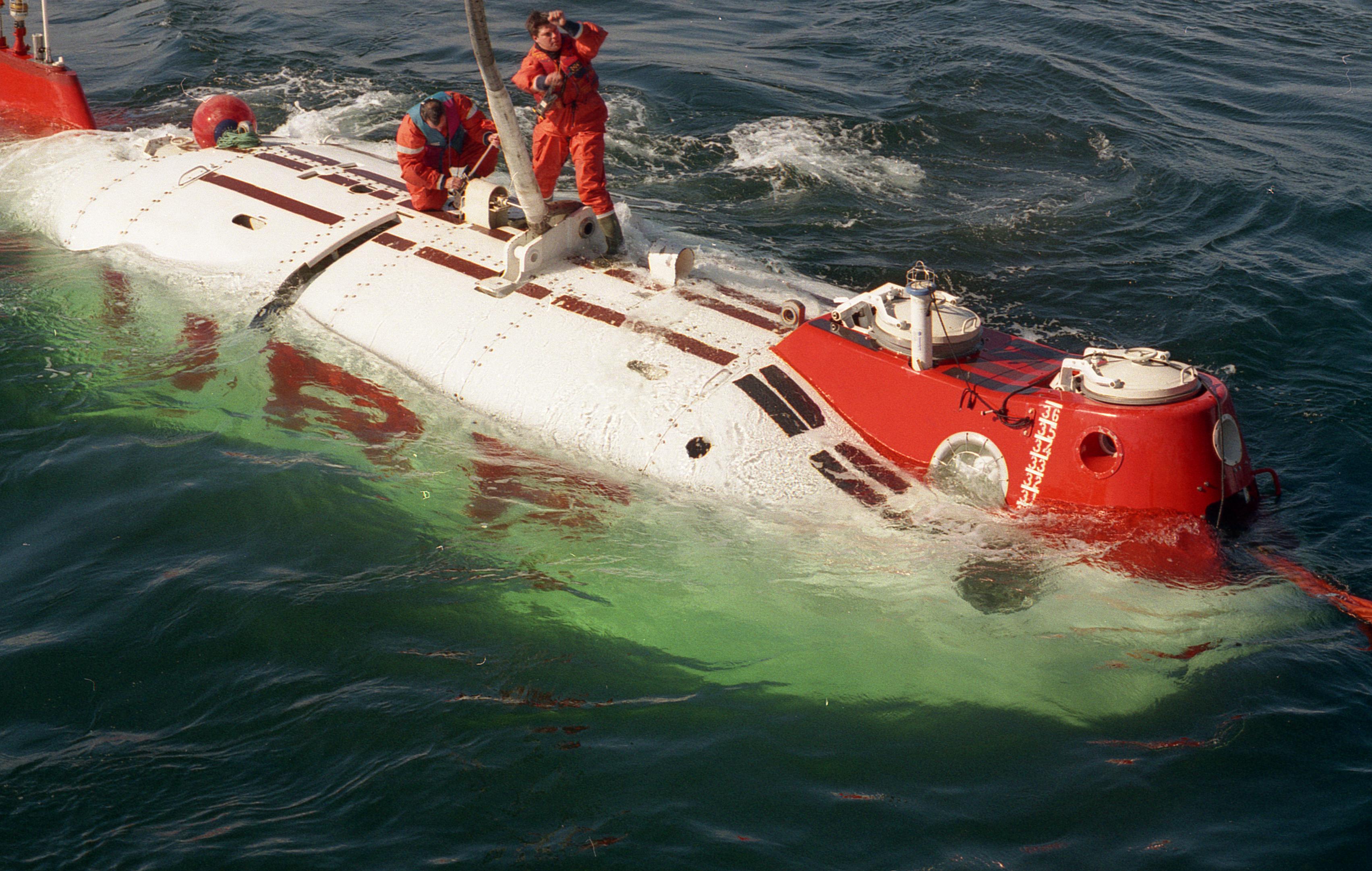
The URF connected to be lifted on board the Belos III. Photo Thomas Falk
URF is carried on board a modern submarine salvage ship, Belos III. This
ship has a decompression chamber to take care of men that
have been subjected to high pressures.
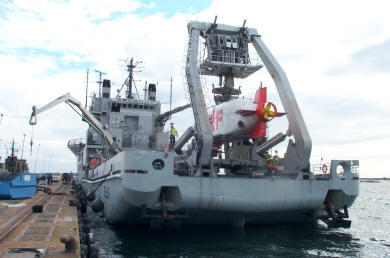
Submarine rescue ship Belos III with URF in the hydraulically operated A-frame. Photo U3 archives.
Submarine rescue is today subjet to international cooperation. Countries
lacking own rescue capacity can sign agreement on assistance
from other nations.
URF can e.g. be transported on large Russian aircraft
to nearly any place on the earth.
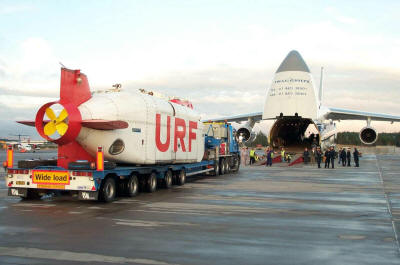
URF under loading aboard a Russian AN 124. Here the aircraft nose with cockpit is lifted to allow for the URF to enter. Photo Thomas Falk.
Free escape
One method of escaping from a
distressed submarine is using a free escape trunk allowing
the crew to leave the boat one by one.
This procedure is
practiced in the diving tank in Karlskrona. This facility is
kept up to standard with the developing technology for 64
years. This diving tank is a unique asset and utilized by several nations’s submariners
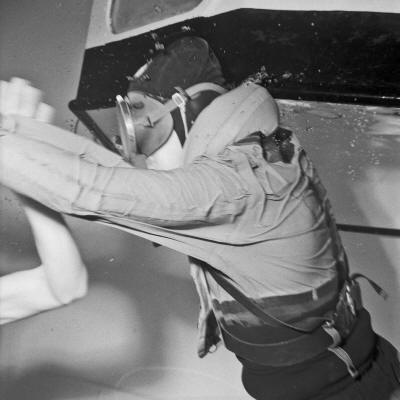
Training at the diving tank in Karlskrona, 1965. Photo U3 archives.
The modern rescue suite used by submariners today can keep the man
floating on surface alive for at least 24 hours. A small
rubber raft is incorporated in the suit. See drawing
pdf-dokument
Should a submarine of to day stay on the bottom, unable to
surface, there is a good chance for the crew to be saved